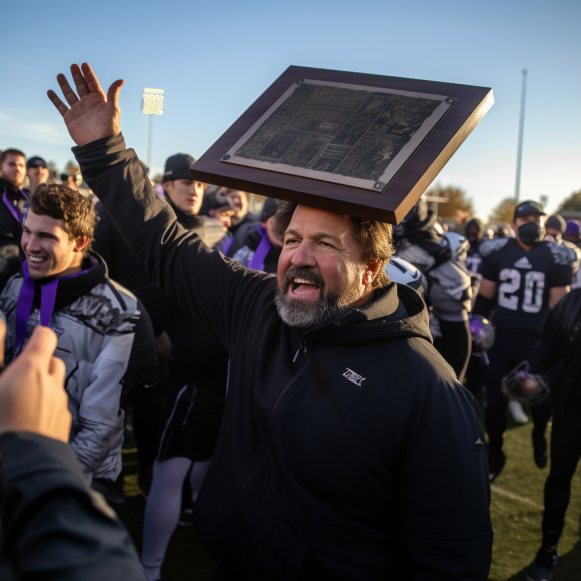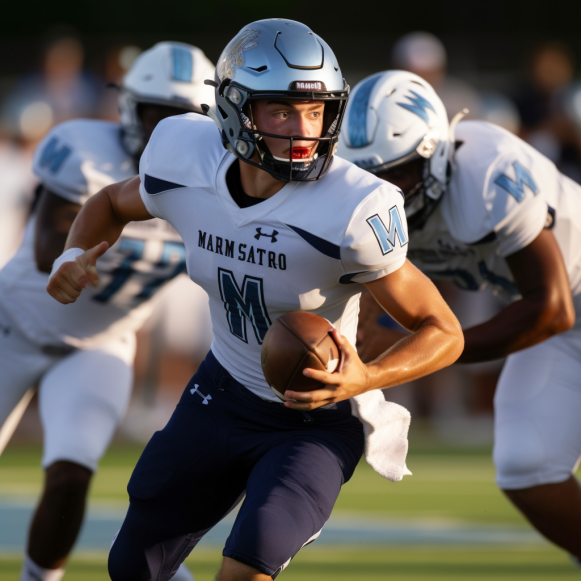Pac-12 collapse: Washington president says $500 million counteroffer to ESPN would have been “stupid,” doubts it ever happened
Ana Mari Cauce says bad timing hurt Pac-12 media negotiations
Ana Mari Cauce, president of the University of Washington, disputed the notion that the Pac-12’s media rights negotiations with ESPN failed because university presidents believed the conference was worth $50 million per school, or a whopping $500 million per year.
Cauce, on the other hand, stated that the $50 million figure was discussed last year as a target for total revenue distributions to campuses, which would have included payouts from the College Football Playoff, the NCAA Tournament, and the media rights deal.
“In some models, it was possible for some schools to get $50 million,” Cauce said earlier this month to the Hotline. “But no one ever imagined we’d all get $50 million in media rights.” That would have been a bad idea.”
Cauce explained that after USC and UCLA announced their departures (in June 2022), commissioner George Kliavkoff informed the conference’s remaining presidents that 30 percent of the conference’s media valuation “just walked out the door.”
“There was no scenario in which everybody thought the schools could bring in $50 million,” Cauce stated. “George’s estimates ranged from $30 million to low $40 million.” Some (schools) could earn up to $50 million from the (playoff) and media rights.”
According to sources, ESPN offered $30 million per school per year. When asked if Kliavkoff accepted the network’s $50 million counterproposal, Cauce replied:
“I can’t say for certain that (Kliavkoff) requested $50 million per school, but I’d be surprised if that was a serious counteroffer.” I have notes, and $50 million was never mentioned to us. That has never happened to me.”
Cauce was the Pac-12’s board of directors chair at the time.
The $50 million offer, first reported by JohnCanzano.com, is seen as one of many strategic blunders made during the conference’s failed 13-month pursuit of an agreement that would have saved it from dissolution.
Instead of renewing its partnership with ESPN and Fox during the summer’s exclusive negotiating window, the Pac-12 took its media rights to market just as the economy began to deteriorate. After a long period of inactivity, Kliavkoff accepted an offer from Apple this summer worth $25 million guaranteed per year, with additional revenue available if subscription targets were met.
On August 4, Washington and Oregon rejected the Apple deal and fled to the Big Ten, causing five more schools to leave and leaving Washington State and Oregon State behind.
“We had reason to believe that we didn’t have to be in a hurry and that we could bring other people to the table,” Cauce said of the lengthy process. “The timing didn’t work.”
Several sources disputed Cauce’s interpretation of last fall’s negotiations with ESPN, claiming that the presidents supported asking for $50 million per school per year.
The strategy was implemented at a critical juncture in the Pac-12’s survival battle: after the Big Ten agreed to a deal with Fox, CBS, and NBC for approximately $65 million per school (in the middle of August), but before the Big 12 renewed its agreement with ESPN and Fox for $31.7 million per year (in late October).
According to sources, Kliavkoff offered the presidents a valuation range of $35 million to $43 million for the entirety of the Pac-12’s media rights.
A variety of models were considered, and meetings were held, some with the full board and others with president sub-groups. According to multiple sources, their positions could be classified into one of three categories:
— Using an on-campus advisor’s analysis, one president was the primary driver of the $50 million asking price.
(The Hotline has not identified the president in question to the level required for publication. We were able to confirm, however, that it was not Cauce.)
— A small group of presidents agreed with the $50 million analysis and agreed to present the proposal to ESPN.
— The remaining presidents remained silent.
During a crucial meeting in late summer, however, “two presidents said to ask for $50 million,” a source recalled. “No one said, ‘That’s a terrible idea.'” They were pressuring George to strike a hard bargain.”
“People with expertise were telling them there was a path to a deal in the $30 million range,” said another source. According to one president, ‘we should be in the 50s.’ This resulted in delays.
“Delays don’t always matter. Two things happened in this case: the Big 12 struck a deal, which reduced the networks’ need for us. Second, the economy tanked.”
Kliavkoff did not respond to requests for comment for this article.
According to multiple sources, the presidents were made aware of the risks involved in negotiating for $50 million per school — specifically, that it could prompt ESPN to walk away and, in one source’s words, “drive them into the arms of the Big 12.”
So, why did the Pac-12 go ahead with the ridiculous proposal?
According to multiple sources, Kliavkoff failed in his role as negotiator: knowing that ESPN would consider the $50 million price to be exorbitant, he should have pushed back against the presidents.
“You need a commissioner who can talk about where everyone is in reality,” a source said. “George needed to manage that.”
The counteroffer — and Kliavkoff’s inability to gain board consensus on a reasonable valuation — was ultimately one of several errors on the Pac-12’s long road to demise. However, it did not spell the end of the conference.
“It’s like a blown play with 10 minutes left in the fourth quarter,” according to a source. “That doesn’t mean you lost because of it. But if things go better, you might be able to win.”
One of the challenges, according to Cauce, is the emergence of macroeconomic factors in the late fall.
“There were some things that were not predictable by history,” she stated. “Given how well technology companies performed during the pandemic, who would have predicted layoffs?” Perhaps there should have been more urgency in retrospect.”
On the 13-month process as a whole, she added, “I’m not sure I fully understood how destabilizing it would be.”




